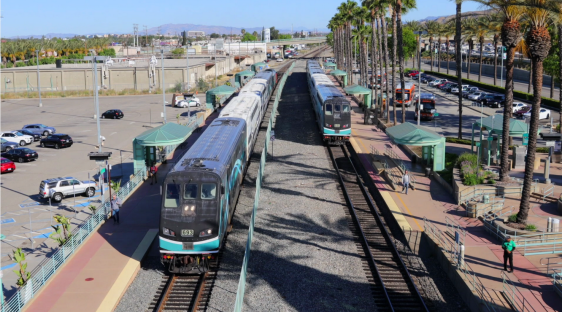
Transportation consultants and planners associated with the San Francisco Transportation Authority's (TA) ATG working group sent excited bursts of email to each other earlier this month about a new development coming from the state Office of Planning and Research (OPR), the body responsible for writing and amending the CEQA guidelines related to transportation and traffic. The OPR had adopted much of the spirit of the working group's recommendations and proposed an amendment (PDF) to CEQA guidelines that de-emphasized LOS and indicated that it would be much better to use measures for vehicle miles traveled (VMT) reductions such as ATG.
"How on earth did this happen? Did we actually have an impact?" someone involved asked in one of the emails. This same commenter related a chain of events wherein representatives from the TA and consultants had been up to Sacramento to lobby the OPR only weeks before the amendment was adopted and had been given no indication by staff that a change so momentous was in the offing.
The specific changes to the CEQA Environmental Checklist for transportation also call for the elimination of parking supply as an environmental factor of CEQA and focus attention on the desirability of reducing VMT (PDF).
Said Jeffrey Tumlin of Nelson Nygaard Consulting:
What I like about OPR's wording is that it maintains the traffic section that everyone expects to see, but gives a very different analysis. With vehicle trips rather than congestion as the potential impact, one would not ever be able to widen a road to reduce the impact. Widening the road would increase the impact by inducing more vehicle trips! To reduce the impact, one needs to reduce the number of vehicle trips at the source.
The amendment to the CEQA guidelines by the OPR was part of a larger effort to conform California's greenhouse gas (GHG) emissions to the requirements legislated in Assembly Bill 32, which requires 1990 levels by 2020.
Accordingly, the OPR has until July 1st to complete its analysis of the CEQA changes, at which point it would go to the California Natural Resources Agency, which has until January 1, 2010 to enact the regulations.
Terry Roberts, Director of the State Clearinghouse at the OPR, believes they will complete OPR's mandate much sooner.
Once we get those comments we will take the time necessary to go through them all carefully and then to consider whether we should revise our proposed language, and that may take a few weeks, but we want to do it as soon as possible. We understand the need for the Resources Agency to have more than 6 months to complete the regulatory rule making process.
When asked how the OPR had come to embrace the recommendations so similar to those proposed by the TA's working group, she responded:
OPR had been receiving suggestions months and months ago from various parties, some from local governments, others were environmental organizations, and they all seemed to be saying the same thing to OPR and that is the over-emphasis on Level of Service in the CEQA analysis of a project was creating obstacles to better planning and smart growth.
It is unclear what the result will be later this year, and Roberts was quick to maintain that there isn't widespread agreement in public comments that LOS should be removed from CEQA. "There could be a legal reason to shoot down any of what we've proposed. I can't predict how successful this change will be in going through the rule-making process."
Mayor Newsom's administration is thrilled with the developments and will push at the state level for the transportation changes to become law. Michael Yarne of the Mayor's Office of Economic Development said that all the agencies involved in LOS reform will submit a joint letter of support or similar letters of support from each agency to the OPR by next week.
Yarne called the transportation amendment "revolutionary" and said "the idea that the speed and free-flow of cars is the proxy that is being used across the state of California to measure whether a project is [environmentally] impactful is in the long run undermining the very quality of life [we] are working to protect."
Paradise LOSt (Part I): How Long Will the City Keep Us Stuck in Our Cars?
Paradise LOSt (Part II): Turning Automobility on Its Head
Flickr photo: Thomas Hawk




